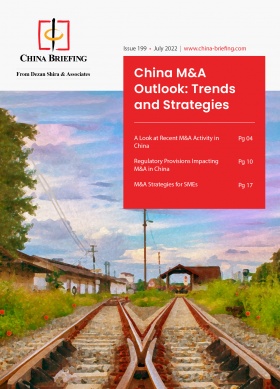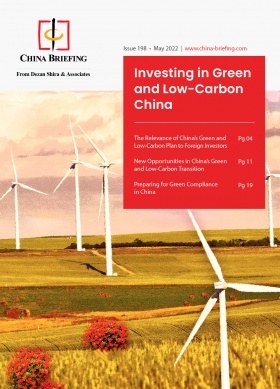The Spillover Effects of a US Recession: How Businesses in Asia Can Prepare
Discussions of a recession in the US have been on the rise. Surging inflation and successive interest rate hikes from the Federal Reserve have weighed heavy on the capital markets. Challenges, including supply-side disruptions, a protracted Russia-Ukraine conflict, rolling lockdowns in China, and declines in consumer spending, could end up in recessionary outcomes. In this article, we look into the possibility of a recession in the US, potential spillover effects on the global economy, and how businesses can prepare to circumvent risks should a recession happen.
Will there be a recession in the US?
There is no universal definition for an economic recession, but analysts and investors commonly define it as two consecutive quarters of negative GDP. In 2022, the US reported consecutive negative growth, with 1.6 percent and 0.9 percent decline in GDP for the first two quarters respectively. The US 10-year treasury bond was down 14 percent year-to-date in June, marking its worst six-month run in history. The GDP report signaled weakness across the economy. Poor economic performance has decreased consumer confidence greatly. Consumer spending slowed as Americans bought fewer goods. The Consumer Sentiment Index, provided by the University of Michigan, fell sharply from 67.2 in January to 58.2 in August this year. The last time this number decreased to such a low level was during the 2008 financial crisis. Similarly, the US Conference Board survey of CEOs shows a plunge in confidence in current economic conditions. All these indicators unequivocally reflect a substantial weakening in economic activity and foster some to consider a “technical” recession in the US. However, there is little consensus on if a full-blown recession might happen. Those who are more positive about the economic outlook argue that the downshifting is not “significant” enough to corroborate a recession. On the economic front, the US Labor Department’s employment report for July was unexpectedly strong, showing a gain of 528,000 new jobs. Over the summer, the overall rate and number of layoffs have been flat on a monthly basis, and even with the raising interest rates, employers are still eager to hire. It’s difficult to state that the economy is in recession when job growth remains well above long-term averages. A key question to decide is whether the declines seen in 2022 are temporary or reflect a structural change that could remain for an extended period. The Bloomberg Economics’ model, having incorporated a variety of factors ranging from housing permits and consumer survey data to Treasury yields, puts the chance of a US recession at 38 percent within the next 12 months, up from around 0 percent just a few months before. A spillover effect to the rest of the world seems inevitable. Asia’s risk of recession is around 20-25 percent, while Europe at 50-55 percent.
How will a US recession impact the world?
In a well-connected world today, a US recession will have its spillover effects. While the debate on whether a recession is really underway is still ongoing, the world is already feeling its impact. Economists believe Europe, UK, Japan, South Korea, Australia, and Canada are likely to be more impacted than others and could slip into a recession over the next 12 months. Investors are uneasy that aggressive US and European interest rate hikes to cool inflation, which is running at a four-decade high, might derail global economic growth.
The European market faces greater recessionary risks
In Europe, the red lights of recession are flashing. The eurozone’s big four economies – Germany, France, Italy, and Spain – have been downgraded by the International Monetary Fund (IMF) over their growth forecasts, due to a combined effect of the Russia-Ukraine war and higher interest rates. The UK saw its inflation above 10 percent for the first time in 40 years as households struggle with rising energy costs. In addition, global supply chain disruptions, worker shortages, and frequent extreme climate events are also hitting European economies. All this have led Goldman Sachs analysts to believe that the US equity market may offer greater absolute and risk-adjusted return potential than recession-plagued European ones.
Impact on the Asian markets
Asian markets will not escape unscathed if the US falls into recession, particularly smaller economic entities with high trade dependency. Economies too could be more susceptible depending on their trade exposure and risks facing export-oriented industries.
In this regard, countries in Southeast Asia will be more badly hit than others. Other economies whose growth is driven more by domestic demand are more likely to be resilient to withhold the downdraft. Economists also point out the role of China in the region’s economic well-being, stating that the recession will depend on China’s COVID rules as a major trading partner in the region.Can China be a hedge for US investors?
In 2022, China faces multilayered economic challenges, including continuing zero-COVID restrictions, the ongoing Russia-Ukraine conflict, and tense China-US trade relations. Below expectations, China’s Q2 GDP growth was 0.4 percent, the lowest since the country’s economy shrunk by 6.8 percent in Q1 2020 at the beginning of the pandemic, according to official data. Other key economic indicators, such as industrial output, retail sales, and fixed asset investment, also show a slowdown in growth.
In late July, China’s Politburo met to discuss the economic development for the second half of 2022, setting back the GDP growth target of 5.5 percent. The meeting called to “focus on stabilizing employment and prices, keeping the economy operating within a reasonable range.” As immediate responses, Hong Kong’s Hang Seng index dropped 2.3 percent to 20,148.90 and the Shanghai Composite index declined 0.7 percent to 3,258.86. Though with emphasis to prop up the dropping consumer demand, the meeting reaffirmed the government’s stances to stick to strict anti-COVID tactics.Case for optimism in China’s economy
Despite the gloomy data, certain aspects of the Chinese economy stand robust. Below are some indicators that show positive growth:
- Trade: China’s trade has continued to exceed forecasts in 2022. Total import and export of goods in July reached RMB 3.8 trillion (US$559.8 billion), the highest rate so far in 2022, and a year-on-year increase of 16.6 percent. Recording growth, Chinese exports reached RMB 2.24 trillion (US$330 billion) in July, exceeding the forecast by 15 percent and was up 18 percent year-on-year. Among the exported goods, mechanical and electrical goods take the largest share, with ASEAN, EU, the US, and South Korea as the major trading partners.
- Industry: On the industry front, certain sectors, particularly the energy sector, saw significant growth despite the overall economic slowdown. The sales of new energy vehicles were up 112.7 percent year-on-year, while the solar energy battery market grew 33.9 percent year-on-year.
- Technology sector: The information transmission, software, and IT services sector grew 10.3 percent year-on-year. As the regulatory risk abates with the easing of the regulatory crackdown, the technology sector is once again becoming attractive to investors. Stocks of Alibaba and Tencent are not directly tied to higher interest rates in the US, but policy initiatives in China for their operations. They can be beneficial to diversify the investor portfolio.
China’s COVID policies and signs of reopening
Since the start of the pandemic, China has been pursuing a strict stance on COVID-19 disease management, which have led to the shutdown of major cities and manufacturing hubs. In 2022, despite sporadic outbreaks in different regions, China has stayed on course with its zero-tolerance practice, shunning away from herd immunity.
But with most of the world returning to normal, some signals show China may reopen soon. For instance, the government has relaxed international travel restrictions, including reducing mandatory quarantine requirements and loosening testing measures. On the domestic front, updated pandemic guidelines for containment and surveillance will be able to ease overly aggressive local restrictions. Meanwhile, China’s efforts in developing new COVID preventive measures can also contribute to the effort. On August 5, inhaled COVID vaccines by CanSino obtained approval from the government, making China the first country with such advancement. All these developments hold positive implications. After two years of restricted economic growth, China’s own economy will benefit as a new COVID-management policy emerges. Activities halted due to the pandemic will restart to boost the economy. Moreover, the effect of scaling back from COVID-zero will aid recovery of domestic tourism, with full benefits to related industries of domestic aviation, hotels, and retail. Some of the calibrated stimulus measures enacted by the authorities should also start taking effect. All this will add to global demand and support commodity prices. International players, especially China’s trading partners like the US and EU, are poised to gain from the reopening. Either in manufactured goods, tourism, or retail, Western investors are expecting to reinvest in China. At the same time, the reconfiguration of supply chains, relocating certain industries from China to other Asian countries, may ease some trade challenges or in the very least, spread risk.What are market options beyond China for investors?
Portfolio managers believe that a large part of Asia stands to remain economically resilient compared to Europe and the US. Southeast Asian economies like Singapore and Vietnam could benefit from a possible counter-cyclical economic recovery in China and the low interest rate policy in Japan, which favors growth versus countering inflation.
Foreign investors can also look into tapping new opportunities from recent trade agreements, such as the Regional Comprehensive Economic Partnership (RCEP). Meanwhile, the whole Asia-Pacific region has production relationships with China – and depend on Chinese supply chains for their manufacturing, etc. As COVID restrictions get loosened in China, the disruptions to the production supply chain will be resolved, automatically easing pressure on Asian economies. For instance, Japanese government data showed factory output in June jumped 8.9 percent from the previous month, marking the first rise in three months. That’s because the easing of pandemic lockdowns in China in earlier stages had helped boost Japanese production. The macro environment is also supportive of Japanese companies as a weaker yen should bolster profits derived from trade exports.How to prepare for a recession?
While a recession may be on the way and as interest rates rise rapidly, it is essential for businesses to prepare by analyzing key growth drivers, risks, and factoring unpredictable dynamics. Below are some suggested strategies:
- Focus on profitable growth with higher cash flows. Companies may revisit their sales and marketing approach to enable efficient, profitable growth. In some cases, this entails identifying more cost-effective production and ways to scale efficiently.
- Solidify new pricing and portfolio management capabilities. Companies can enhance pricing capabilities by using dynamic price adjustment tools. In the current environment, companies may streamline their product offering and optimize mix to mitigate supply shocks and drive growth, migrating customers to a more profitable portfolio.
- Despite uncertainties, fundamental conditions for M&A still exist. Businesses with strong cash flows and balance sheets may continue to manage operations well by getting a clear view on the full range of potential outcomes in M&A. It is critical to establish a strategic rationale and develop a pipeline of potential deals. Articulating a growth strategy before considering a deal will increase the odds of deal success.
- Enhance the internal control of key business processes. Only those with fewer corporate governance and audit lapses can last longer under critical circumstances. Companies are advised to conduct regular audit of key internal processes, such as finance, human resources, compliance, data protection, etc. to have a thorough and better understanding of their own businesses.
All in all, though various data sets reveal a downward trend for major economies, led by the US and China, certain indicators remain strong – disproving arguments about a recession. In comparison with other economies, Asia-Pacific markets appear more resilient and demonstrate investment-worthy opportunities. China, with its forward-looking market opportunities in energy and higher tech, can assist global investors in reducing their risk exposure.
About Us
China Briefing is written and produced by Dezan Shira & Associates. The practice assists foreign investors into China and has done so since 1992 through offices in Beijing, Tianjin, Dalian, Qingdao, Shanghai, Hangzhou, Ningbo, Suzhou, Guangzhou, Dongguan, Zhongshan, Shenzhen, and Hong Kong. Please contact the firm for assistance in China at china@dezshira.com. Dezan Shira & Associates has offices in Vietnam, Indonesia, Singapore, United States, Germany, Italy, India, and Russia, in addition to our trade research facilities along the Belt & Road Initiative. We also have partner firms assisting foreign investors in The Philippines, Malaysia, Thailand, Bangladesh.
- Previous Article Strategia degli standard cinesi 2035: Sviluppi recenti e implicazioni per le aziende straniere
- Next Article How Can a Company in China Legally Collect Employee Personal Information?










